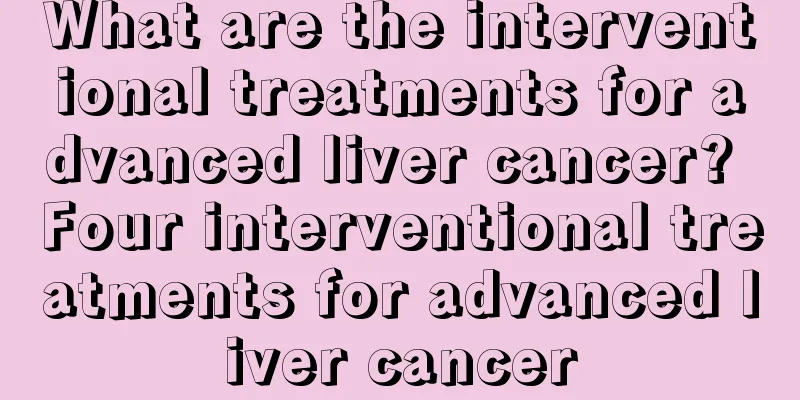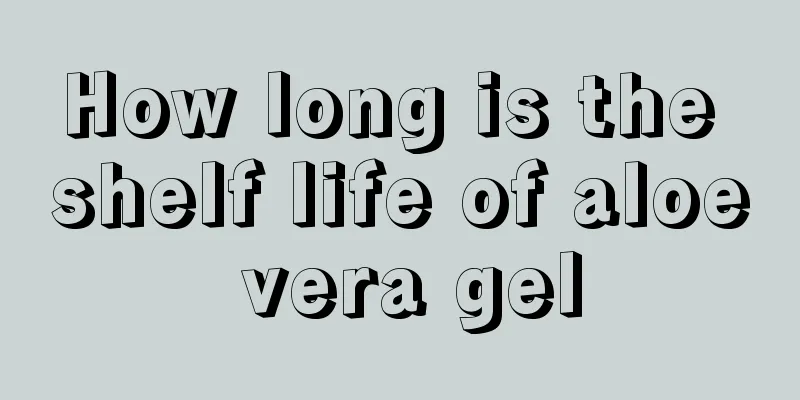What are the interventional treatments for advanced liver cancer? Four interventional treatments for advanced liver cancer

|
The currently recognized radical treatment methods for small liver cancer in the medical community include surgical resection, local ablation and liver transplantation. However, in reality, most patients with liver cancer are in the middle and late stages. This is because, except for the liver capsule and Gleason's sheath, there are no nerves in most of the liver parenchyma. Therefore, when the tumor growing in the liver is small, generally less than 5cm, there is no pain and no symptoms. Therefore, patients will not take the initiative to check, so early liver cancer is not easy to be found except for ultrasound examination. Most of the clinically symptomatic liver cancers are in the middle and late stages, and at this time, patients often miss the opportunity for radical treatment, and treatment is very difficult. In addition, about 80% of liver cancer patients are accompanied by cirrhosis, liver dysfunction, ascites, poor coagulation mechanism, etc., which greatly limits surgical resection. Liver transplantation technology is complex, liver sources are limited, long-term anti-rejection drugs are taken after transplantation, the cost is expensive, and there are many complications. In short, there are many problems. Therefore, the main goal of treating advanced liver cancer is to improve the patient's quality of life, prolong survival time, and relieve pain. It is also the disease we face most and have to try to overcome. Appropriate non-surgical local minimally invasive therapy is the first choice, and killing a large number of cancer cells is the central link of comprehensive treatment. Minimally invasive interventional treatment: 1. Transarterial chemoembolization (TACE) Percutaneous transfemoral hepatic artery embolization is the first choice for patients with liver cancer who cannot undergo surgery. The principle is based on the fact that 25% of the blood supply to normal liver tissue comes from the hepatic artery and 75% comes from the portal vein, while the blood supply to liver cancer nodules comes almost entirely from the hepatic artery. Theoretically, if the hepatic artery branch that provides nutrition to the tumor is cannulated and embolized, it can not only block the blood supply to the cancer tissue and limit tumor growth, but also cause necrosis and shrinkage of the cancer tissue without causing liver failure. However, liver cancer still has portal vein blood supply and extrahepatic blood supply, and the blood supply situation is very complicated, such as the blood vessels wrapped in the greater omentum and the blood vessels on the diaphragm, which are beyond the reach of interventional embolization. For some people, the embolization of the cancerous blood vessels is not as good as expected. 2. Alcohol injection method pEI was developed in 1982 and is mainly used to treat small liver cancer. Anhydrous alcohol injection therapy is to insert a puncture needle into the tumor body through the skin under the guidance of interventional ultrasound, and inject anhydrous alcohol or a hardener. The main mechanism of action is to use anhydrous alcohol to quickly dehydrate and fix the tumor tissue, causing ischemia and necrosis of the tumor tissue. This method is simple to operate, less painful, less complicated, and low in cost, but it also has side effects such as easy diffusion during injection and liver damage. 3. Percutaneous microwave coagulation therapy (pMCT) It is not only suitable for small liver cancer, but also for middle and late stage liver cancer, the combination of multi-level, multi-needle, multi-point, multi-power and time can achieve the effect of eliminating tumors. Moreover, the stimulation of coagulated necrotic tumor tissue can enhance the body's immunity and regulate residual tissue cells or those that are still in the process of canceration, opening up a new way for the treatment of liver cancer. 4. Permanent implantation of radioactive particles between tissues It is a new method for treating liver cancer. Some people in the medical field have vividly called it "particle knife". It uses minimally invasive methods such as ultrasound intervention to directly apply multiple packaged radioactive isotopes with certain specifications and activities into the liver cancer tissue through a source applicator or source catheter. The radiation sources are arranged in a certain pattern according to the size and shape of the tumor, and the tumor tissue is irradiated at a close distance and with a high dose to achieve the purpose of curing the disease. 5. Biological therapy Tumor biotherapy is a new method of tumor prevention and treatment using modern biotechnology and its products. With the in-depth study of the molecular mechanism of tumor occurrence and development and the development of biotechnology, biotherapy has become a new model in comprehensive tumor treatment and has received more and more attention. Currently, the biological treatment drugs that can be used alone or in combination with other methods include |
Recommend
How do smokers screen for lung cancer? You can do these four tests to avoid lung cancer
The lung health of frequent smokers is difficult ...
What are the benefits of platinum to the body
Nowadays, young people are reluctant to choose go...
What to do if the steamed goose egg custard has a fishy smell
In fact, goose eggs have a relatively high nutrit...
Experts explain common symptoms of right colon cancer
The incidence of right colon cancer is relatively...
Is vitamin b1 effective in repelling mosquitoes?
Vitamin B1 is a common medicine for us. Generally...
How to use vanilla pods
Vanilla pod is a plant with a sweet taste. Many p...
Radical prostatectomy is a treatment for prostate cancer
Treatments for prostate cancer include radical pr...
Where is the best place to have a mole?
When moles appear on the hands and face, it will ...
Several effective methods for early treatment of colon cancer
There are two main methods of early treatment of ...
There is a lump on the inside of my ear
The ear is one of our important organs. Some peop...
What's wrong with oily nose on both sides
Many people's bodies do not easily produce oi...
Lumbar compression fracture surgery, late stage surgery required
Lumbar compression fractures are divided into ear...
How to store avocado banana mash
Avocado and banana puree is very suitable for bab...
What foods cause bloating?
A large part of the cause of abdominal bloating i...
How to treat tracheitis dry cough?
Nowadays, many patients suffer from bronchitis, a...









